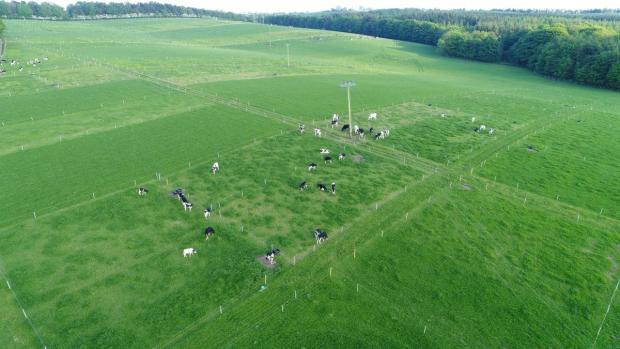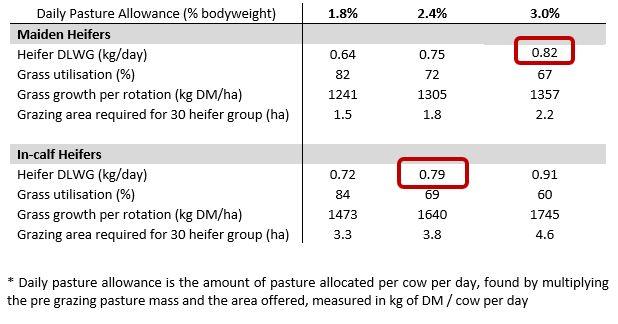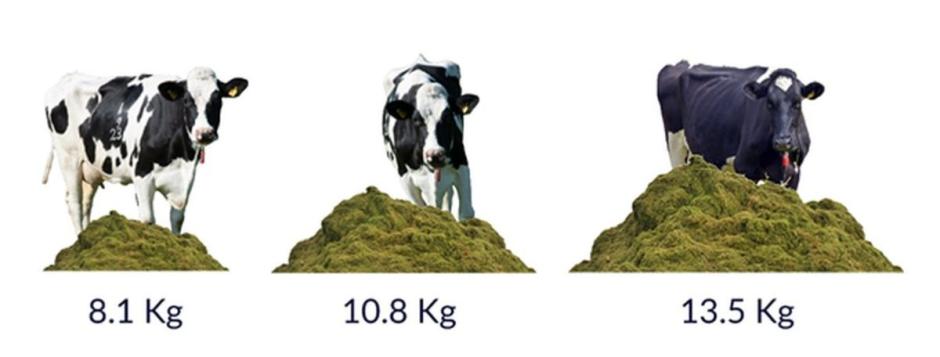Pasture allowance guidance for replacement heifers
Date published:
The rearing of replacement heifers is a significant cost to a dairy enterprise, second only to the cost of feed. So it is vitally important to minimise these costs and the key to this is reducing the time from birth, until entering the milking herd.

At AFBI Hillsborough a research study was conducted to tackle the big question of ‘how much pasture should be offered to heifers’?
As such the impact of different pasture allowances throughout the season on heifer growth and the performance of the grazing sward were examined. This included grass yield, utilisation and quality throughout the season. No concentrates were fed and the heifers were treated with boluses to meet their mineral and vitamin requirements.
Background
It is well known that the optimal age at first calving is 24 months, since achieving this increases productivity, fertility and overall likelihood of survival in the herd. The age at first calving can be controlled through nutrition and breeding decisions since the start of puberty is largely driven by growth rate. To achieve calving at 24 months heifers should be in-calf by 15 months and therefore achievement of target weight for age throughout the growing period is critical.

However, the amount of grazed grass which we allocate to our animals is important, as it will affect the proportion of grass which is utilised, the performance of the animals and potentially the sward quality and productivity later in the season.
How much pasture should I offer my heifers?
The study commenced in April and consisted of 5 month old maiden heifers averaging 155 kg. These heifers were followed as in-calf heifers when their average age was 18.5 months and their live weight was 426kg.
Table 1. Effect of pasture allowance on heifer performance

In each of the studies a strict rotational grazing system was practiced, with frequent rotational nitrogen applications and no other sward interventions (topping or mowing). There is little scientific research in the literature on what the pasture allowance should be for dairy heifers but an allocation based on heifer weight is quoted in the popular press and by advisers. Therefore the treatments under investigation were three pasture allowances, all of which were percentages of the heifers live weight, allocated in kg DM of grazed grass per day: As such the pasture allowance represents 1.8%, 2.4% and 3.0% of heifer live weight.
